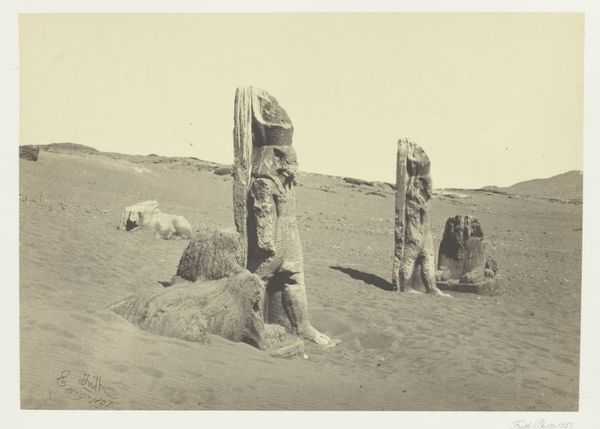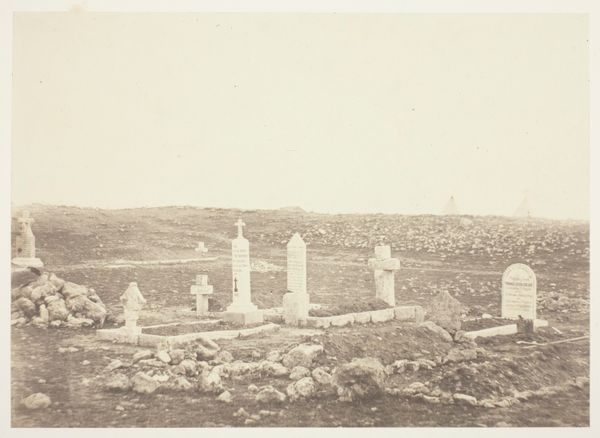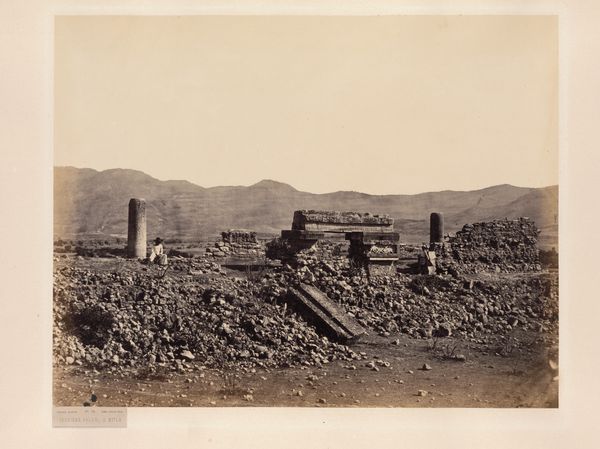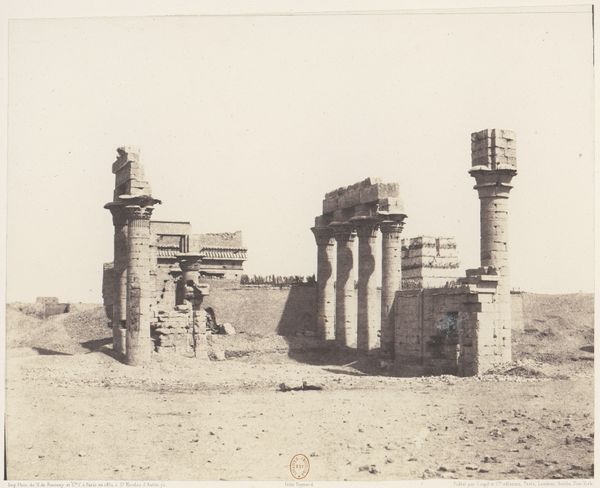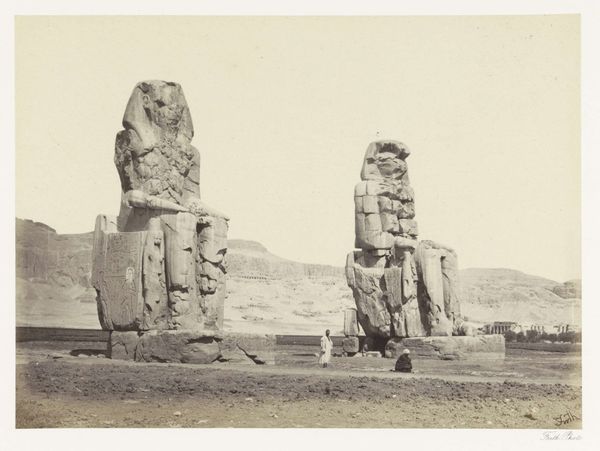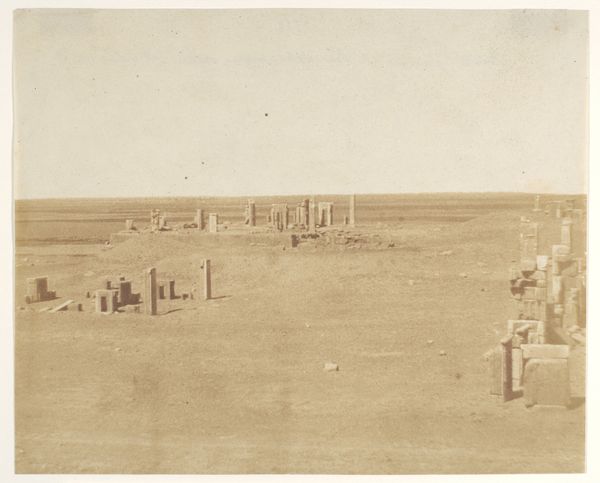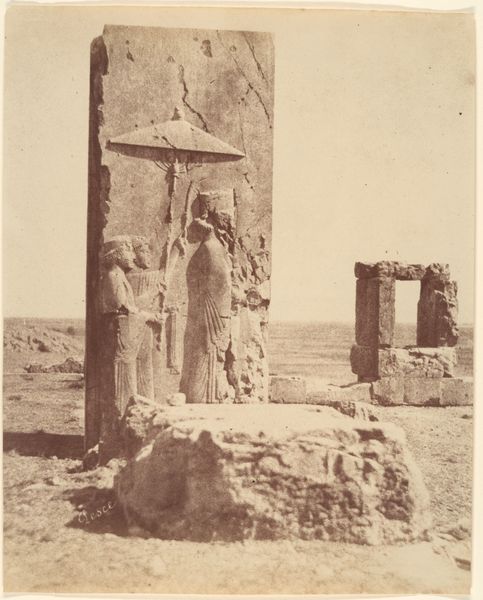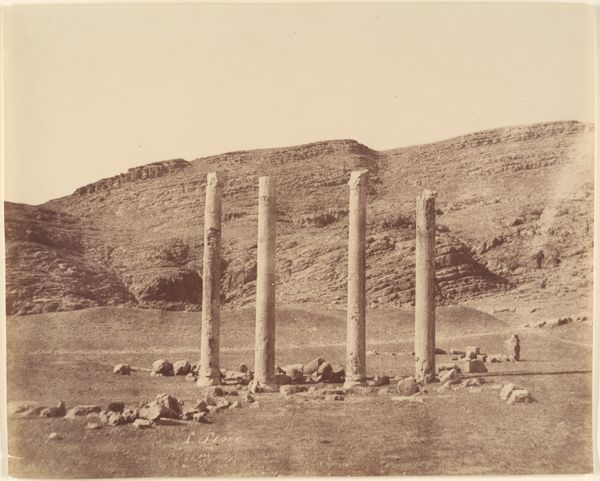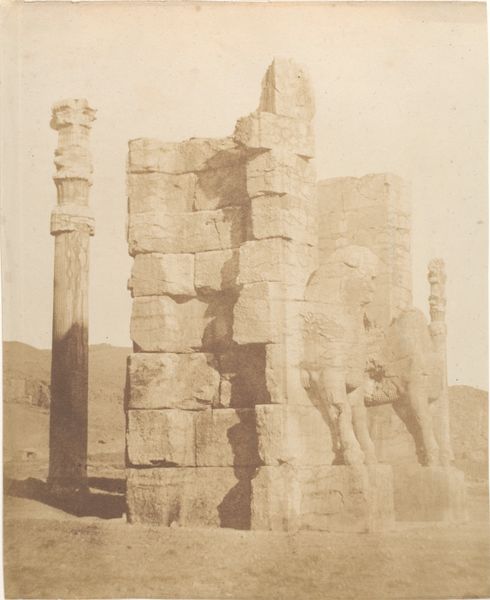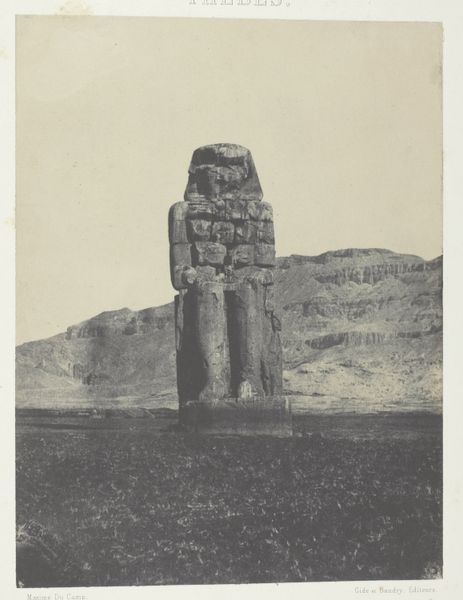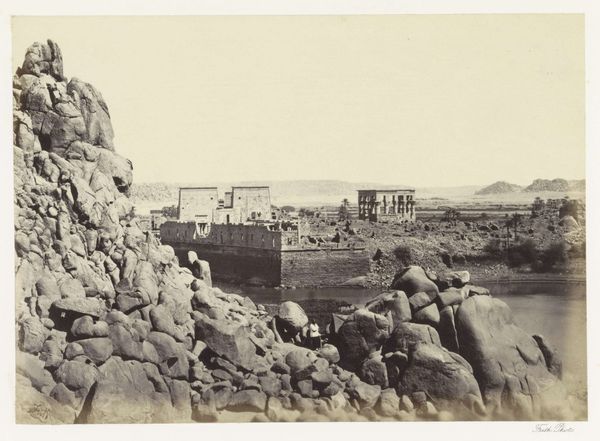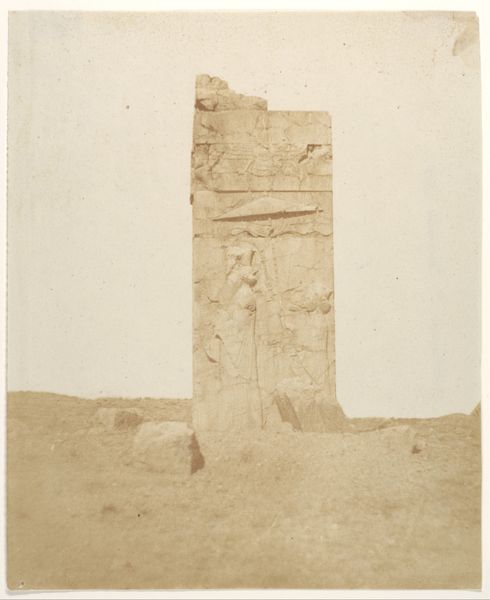
print, daguerreotype, photography, architecture
# print
#
landscape
#
daguerreotype
#
photography
#
ancient-mediterranean
#
column
#
orientalism
#
watercolor
#
architecture
Copyright: Public Domain
Curator: Let's turn our attention to this striking daguerreotype by Luigi Pesce, titled "Ruine sulla prima terrazza, Persepolis," created in 1858. It captures a moment in the ruins of Persepolis. Editor: What strikes me first is this ghostly, sepia-toned atmosphere. It’s as if the ancient city is barely clinging to existence, a memory fading in the desert light. The architecture is really impressive, you know? Those towering columns have such gravitas even as the photograph's ethereal wash is slightly unsettling. Curator: The photograph offers us more than a visual experience. Consider how Pesce’s choice of medium, the daguerreotype, speaks to the emerging intersection of art, science, and exploration during this era. Photography, particularly in documenting archaeological sites, served to record and somewhat "possess" these ancient civilizations within the Western gaze. Orientalism played a huge role. Editor: I suppose the artist probably understood what was going on in Europe and felt he should offer his services? True, there is an implicit power dynamic in its capture. It also makes me think about the ephemeral nature of civilizations, even the grandest ones and...well, also how art transcends empires. There’s still beauty in these ruins, captured here! Curator: Exactly! And Persepolis, once a vibrant capital, becomes a site of reflection on power, time, and the act of witnessing through a lens. Pesce, as a photographer operating within a specific historical and political landscape, reinforces how photographic practices have always been embedded in a complex web of social meanings. The daguerrotype medium created a sense of immediacy in that time that perhaps is faded to us today, given the way modern technology allows constant digital presence. Editor: Perhaps we have lost an eye on history. Well, Pesce might not have realised the daguerrotype would speak such powerful tales over time and context. His work encourages us to really question the lens through which we view the world. Curator: Indeed. His work, from my perspective, serves as a crucial reminder of the politics inherent in visual representation and invites us to investigate historical interpretations of Persepolis. Editor: For me, his work creates a haunting testament to the passage of time. Let’s keep it rolling.
Comments
No comments
Be the first to comment and join the conversation on the ultimate creative platform.


